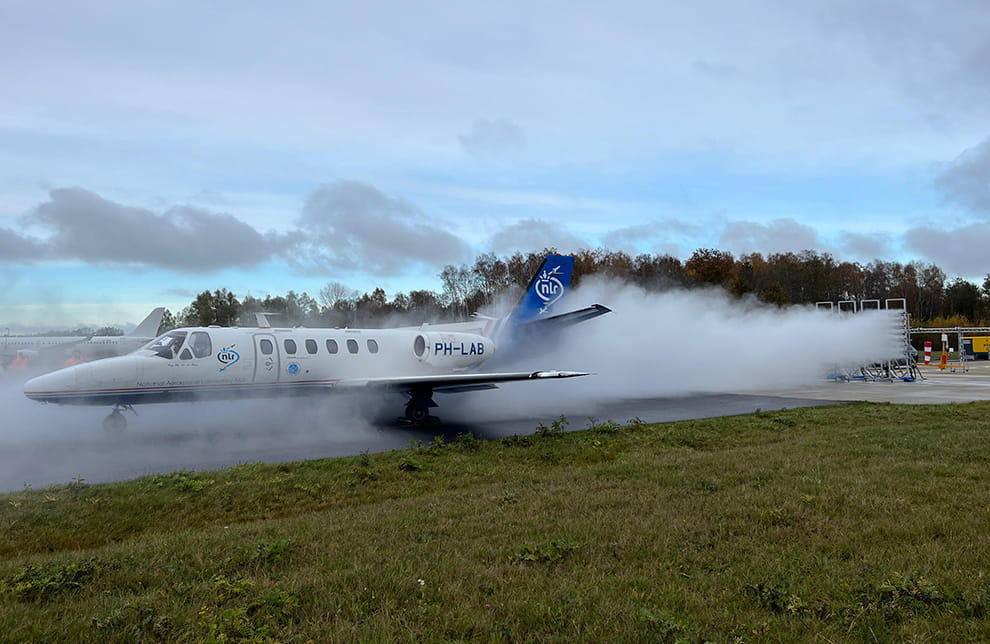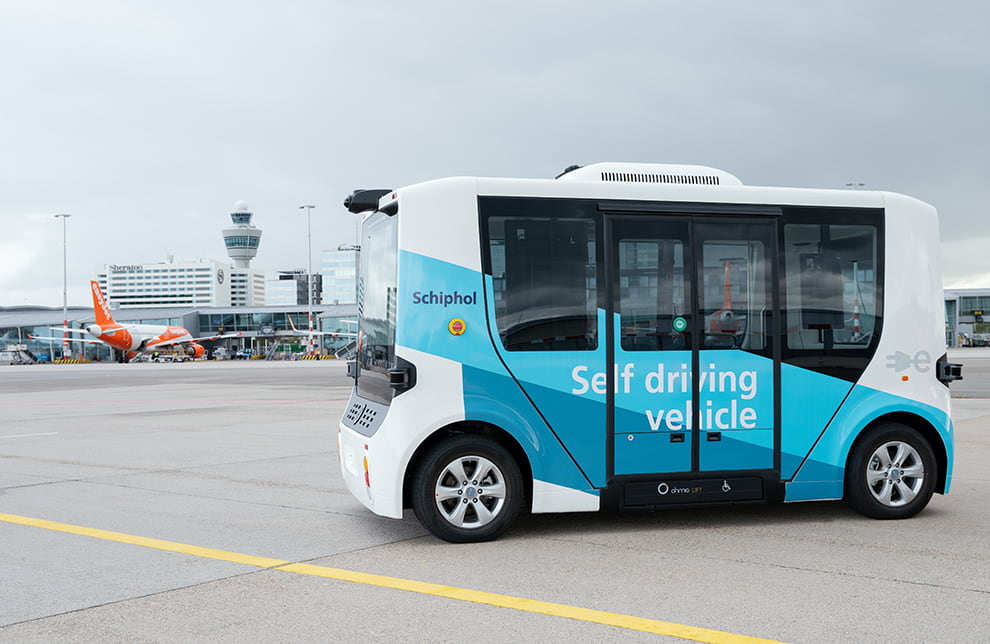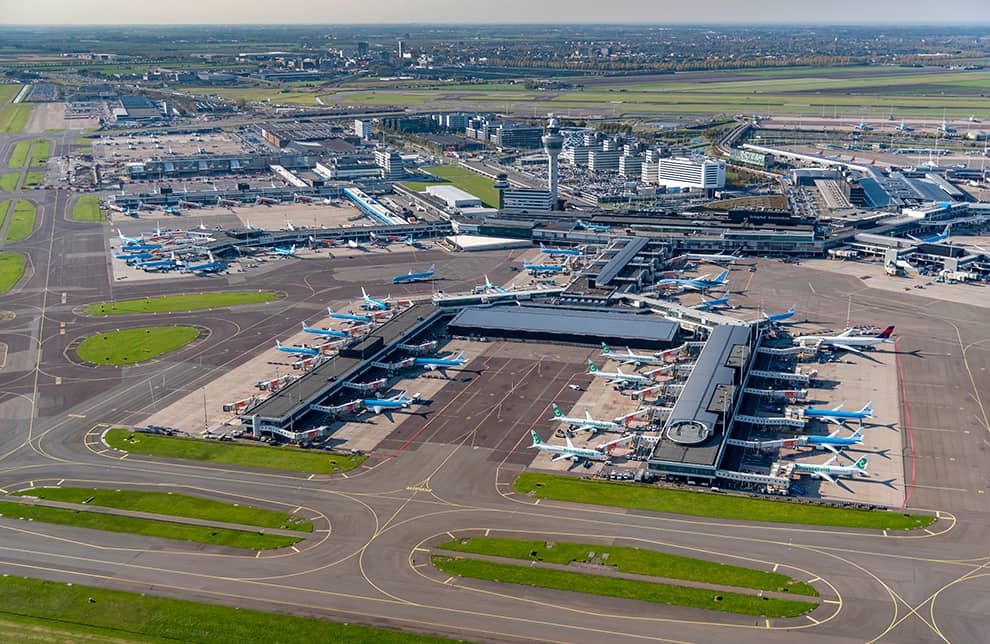Test capturing ultrafine particles with droplets
At Schiphol, we are working diligently to reduce the amount of ultrafine particles. To achieve this, we occasionally explore new avenues through experimental research, drawing inspiration from solutions in other sectors that appear promising for us. One such potential solution is the use of water droplets to remove ultrafine particles from the air.

Healthy air for employees and surroundings
Ultrafine particles are emitted from the use of aircraft and diesel engines. We still know relatively little about them, but we do know they may be harmful to health. It is important for airports like Schiphol to reduce the amount of ultrafine particles. As part of the European research and innovation program TULIPS, we conducted a trial in collaboration with NLR using an innovative water screen.
A water droplet screen to mitigate ultrafine particles
The idea of using water droplets to remove ultrafine particles from the air originates from the construction sector. To prevent environmental nuisance, they use spraying to settle (ultra)fine particles. At Schiphol, we conducted a trial in 2022 with a water cannon to remove ultrafine particles from the air. It worked to some extent, but further research was needed. Therefore, we are now conducting a trial with a special screen that has been developed based on the previous trial. The concept is that the droplets adhere to the ultrafine particles, causing them to settle.
Data analysis
That's the theory, but will it work? For this, the TULIPS team travelled to Airport Twente, where space could be made for the special test setup. Join us at Airport Twente for a test day by watching the video next to this text! Thanks to the test, we have now collected a lot of measurement data. By placing additional sensors, we were also able to better filter out side effects such as weather and outdoor air. In the coming period, we will analyse all the data together with NLR. We expect to deliver the research report later this year as one of the TULIPS deliverables.
Direction of solution
If we determine that the theory works, we are not done yet. Then we still need to translate the innovation into a workable solution for airports. We think of using it, for example, during take-off to reduce ultrafine particles for the surroundings. However, deploying this technique in the busy and complex platform operation still requires further development. But this way, we are gradually gaining more knowledge to tackle ultrafine particles step by step.
More information
Do you want to know more about what we are doing to reduce the emission of ultrafine particles?
Read the previous blogs
-
Tap and go with your Digital Travel Credential!
Published on:Can you board and cross the border faster with a digital travel document? At the request of the EU, we are testing a DTC together with the government and KLM.

-
Autonomous Bus Initiative
Published on:Our ambition: operating the world's most sustainable and top-tier airports by 2050. With this in mind we're putting autonomous buses to the test on airside.

-
New research lab for ultrafine particles on apron
Published on:A research lab has been opened at two aircraft stands. It will be used to measure ultrafine particles, test measures and experiment with innovative ideas.
